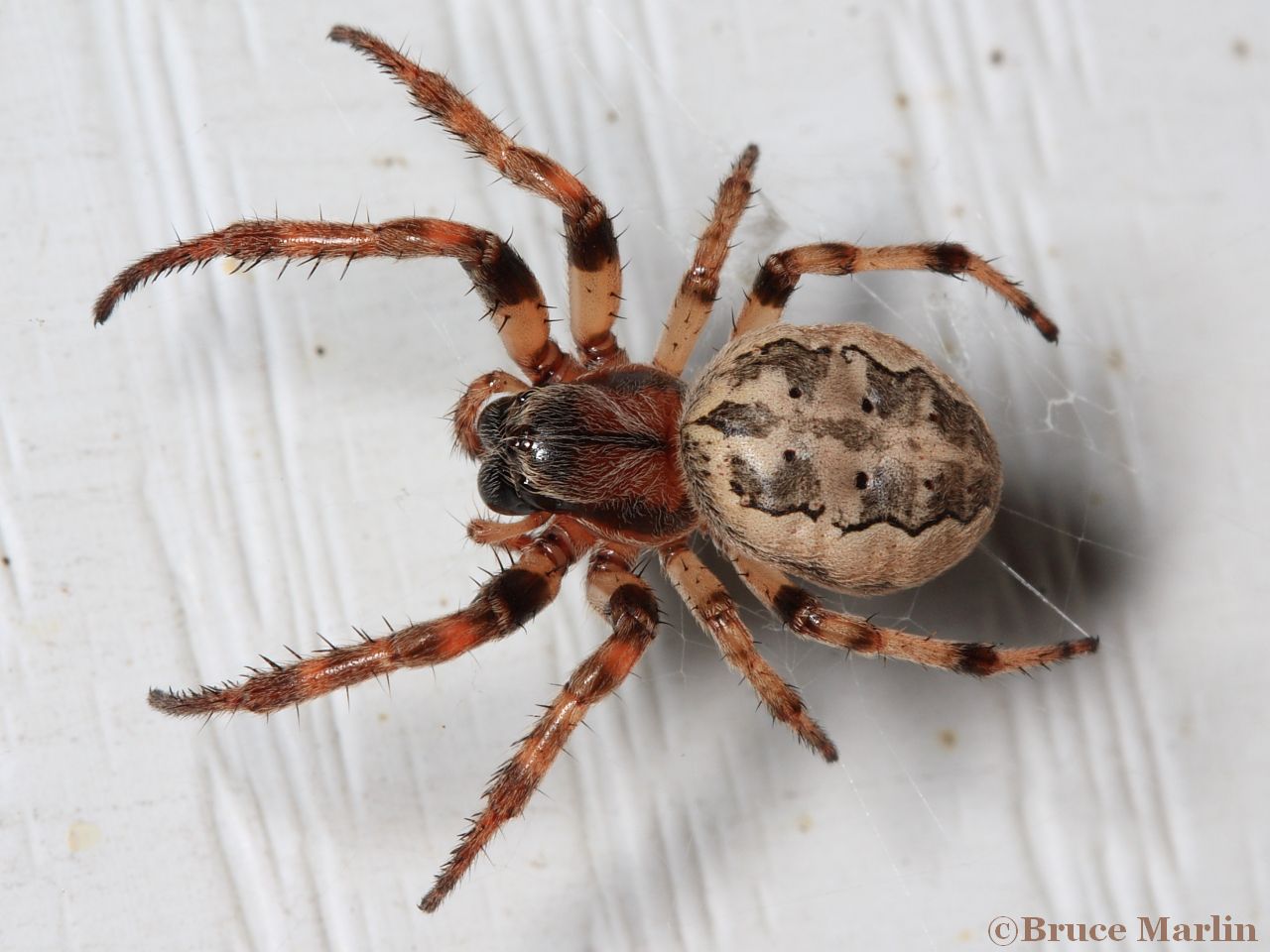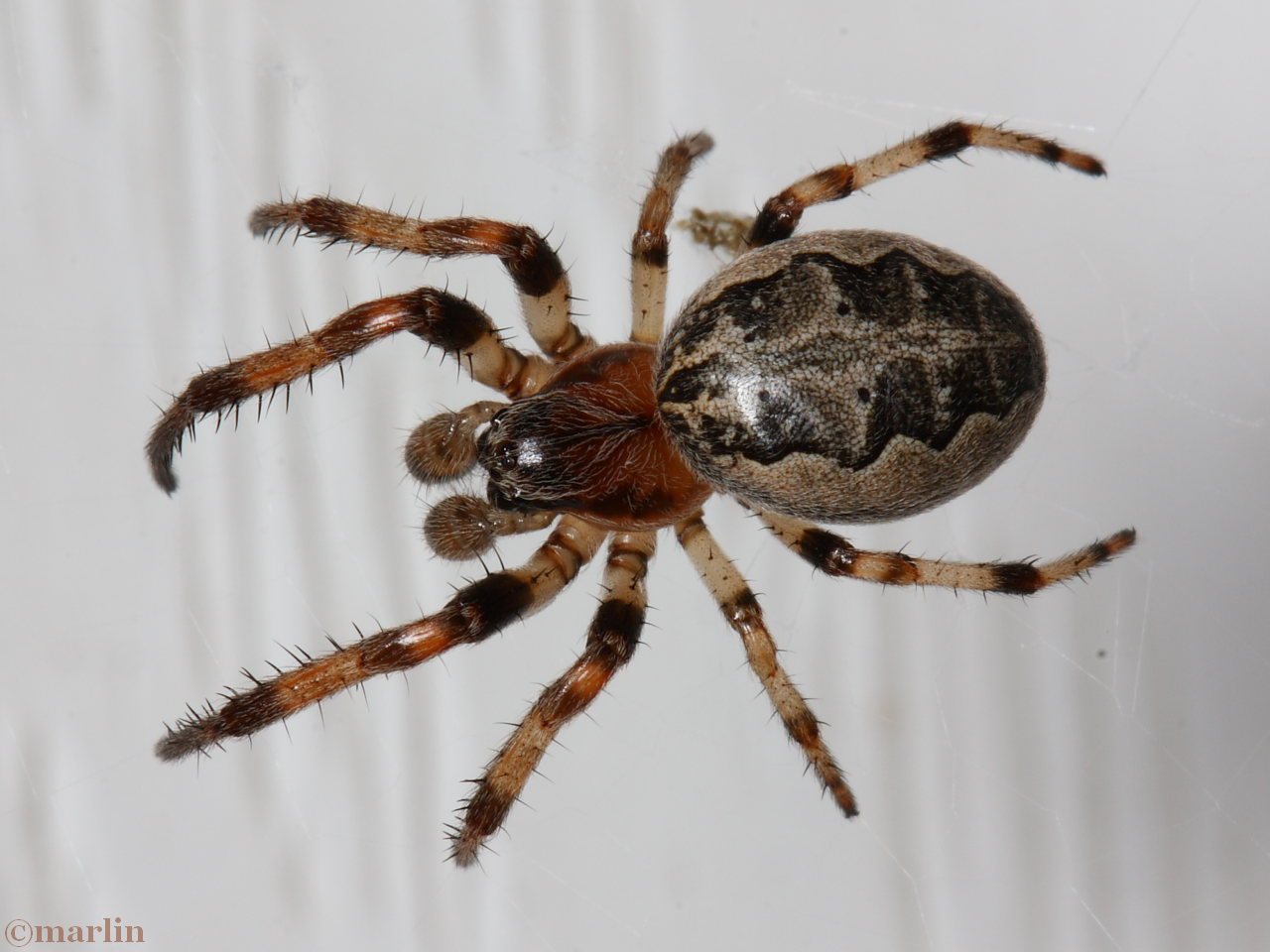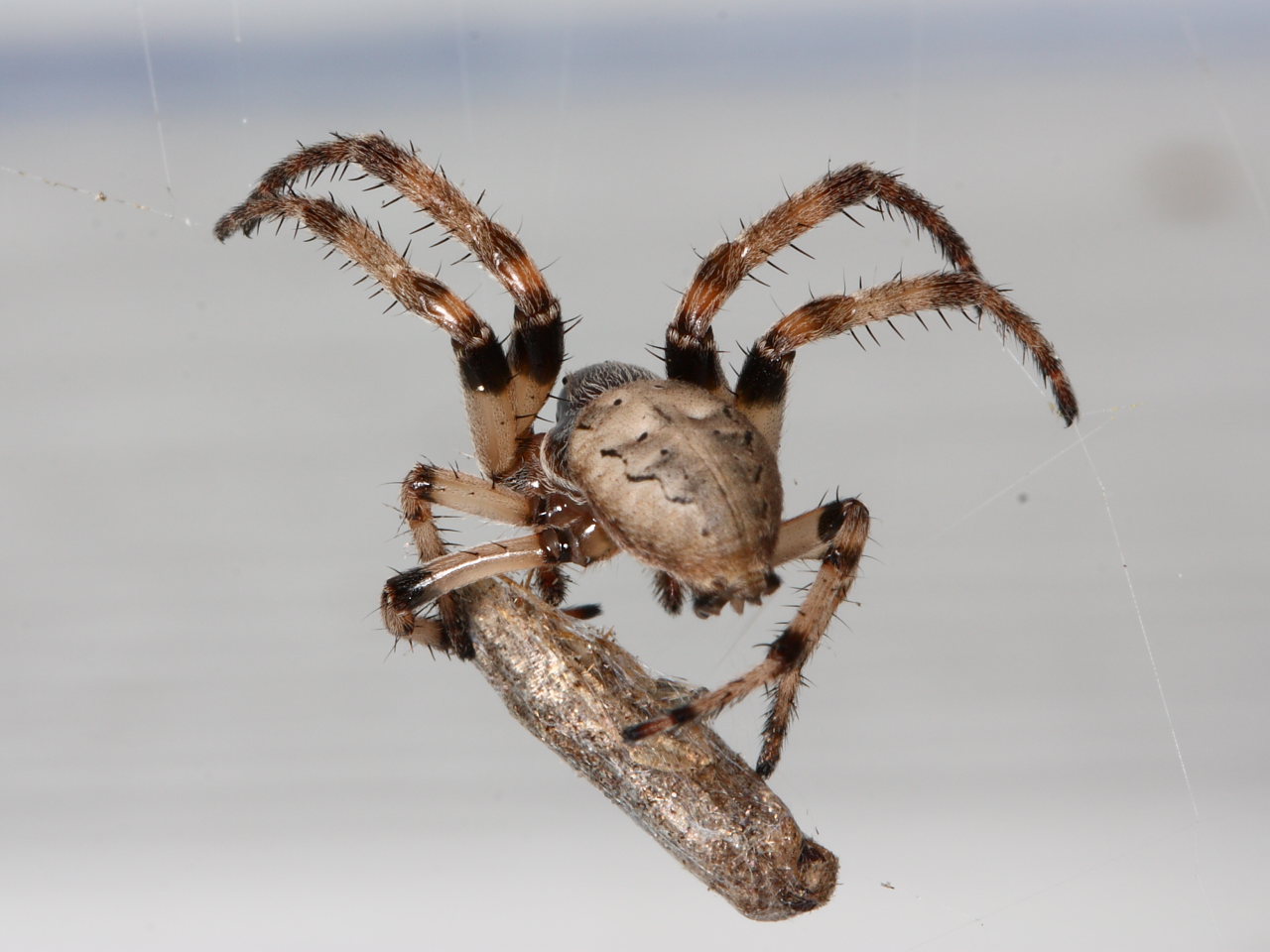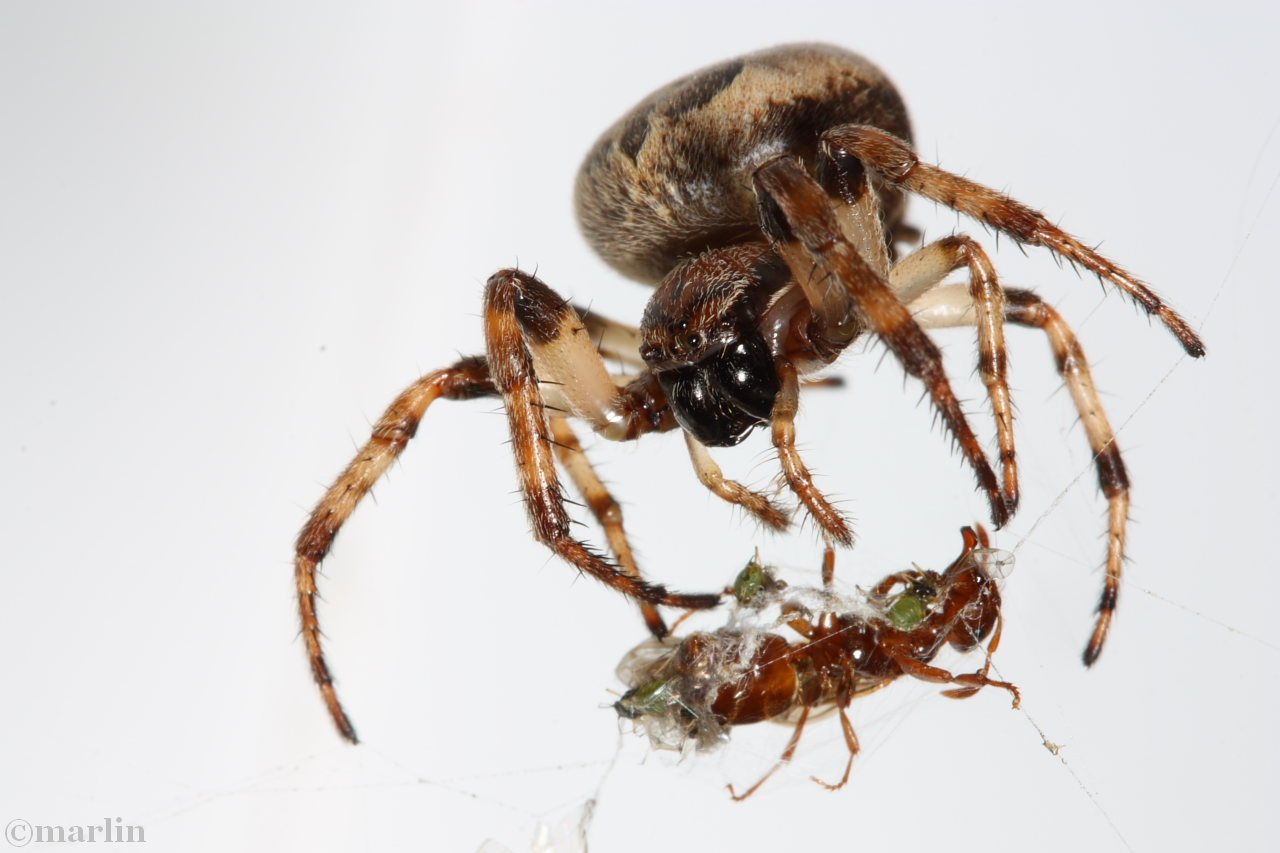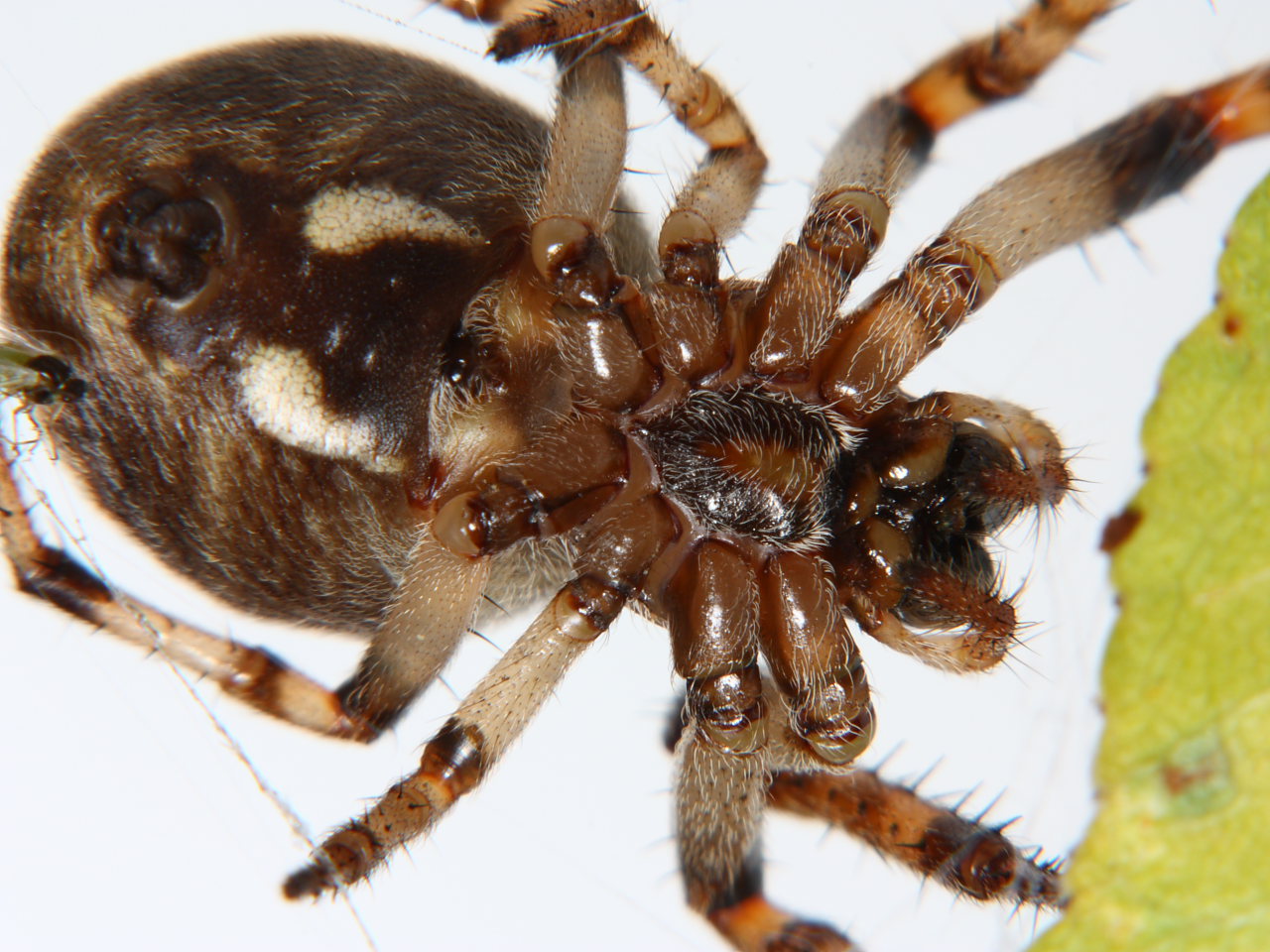Furrow Orb Weaver – Larinioides cornutus
Also commonly called foliate spider, after its prominent folium, or pigmented design on the abdomen. Mature female (above) measures 12mm (nearly 1/2 inch), and the male below 10mm. (Spiders are measured by body length.) Males spiders are almost always smaller and less prominently marked than females, and usually avoid contact with females unless mating.
These spiders are very common on human structures, especially under eaves and porches. They live on my back porch by the dozens, males and females alike in their smallish-orb webs, built just an inch or two away from, and parallel to the wall.
Unlike their larger sisters amongst the weeds, these beautiful little rascals are strictly nocturnal, hiding in crevices or in foliage retreats from dawn till dusk.
Like all spiders, the furrow is venomous. That is, they use venom to paralyze their prey. However, you’d have to work pretty hard to be bitten, and the amount of venom is so miniscule as to be much less dangerous than, say, a bee sting.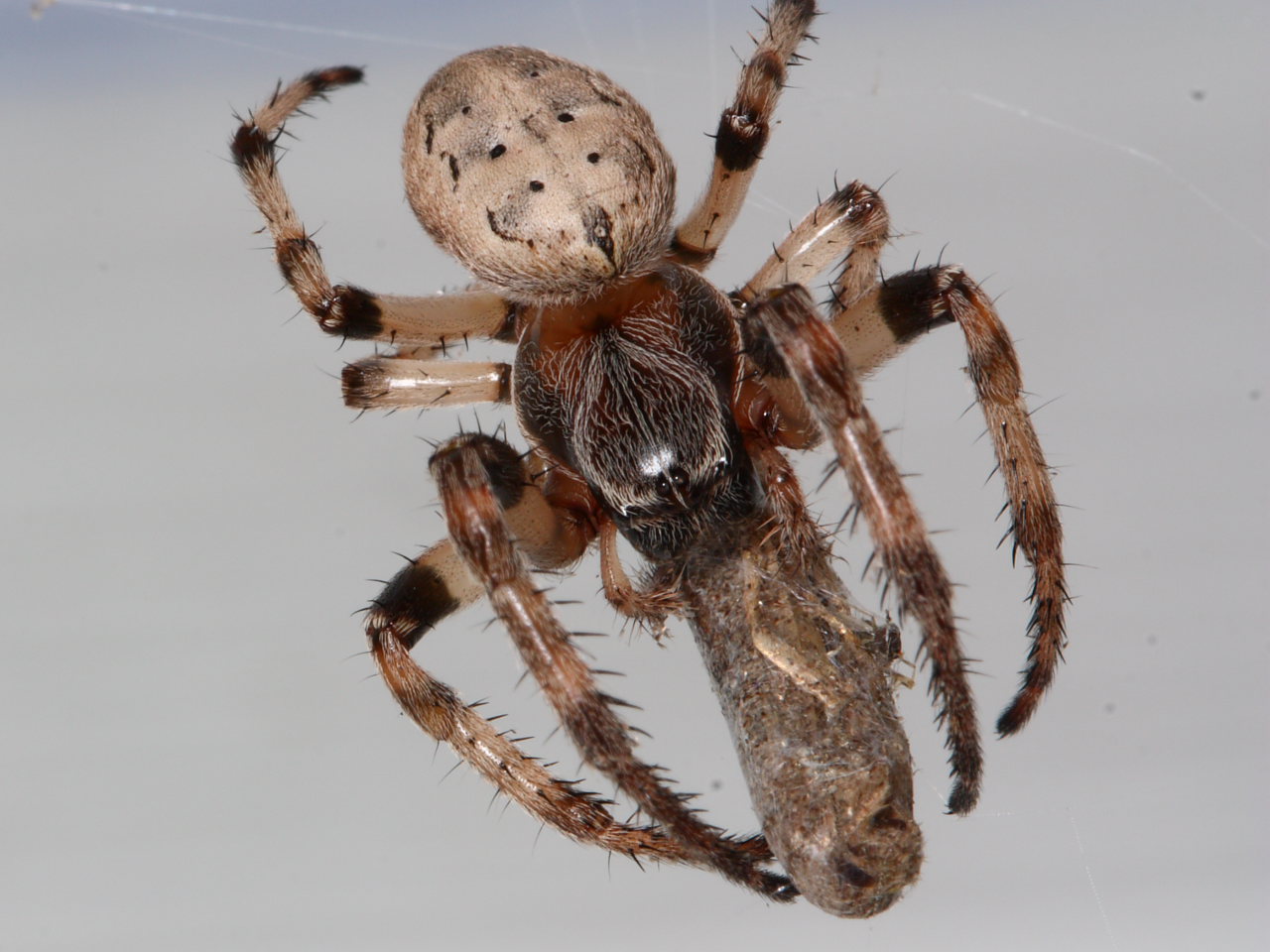
This gal has just finished wrapping a moth for a future meal. Orb weavers quickly bite their prey to subdue and paralyze them before they can escape the web. The spider then quickly positions herself over the prey and begins spraying silk filaments from her spinnerets while spinning the carcase underneath.
The Hobbit Frodo Baggins was victim of this grotesque procedure in his encounter with Shelob in Tolkien’s Lord of the Rings trilogy.
Orb weavers comprise a huge family of spiders, with 3500 species worldwide, 180 of which call North America home. These spiders vary greatly in color, shape and size, measuring between 2 – 30mm (1/16 — 1 1/4″) long. They have eight eyes arranged in two horizontal rows of four eyes each.
Orb weaver males are generally much smaller than the females and commonly lack the showy coloring of their prospective mates, but that is not so with this species: the males are only slightly smaller, and have an even more gaudily-decorated abdomen.
This large female was having a field day catching queen ants from a nearby swarm. Rich pickings, indeed – she doesn’t even have to wrap them; one bite and it’s suspended animation for you, honey, and until I get around to eating you, just make yourself comfortable!
And what a nice load of protein in one of those royals: all that DNA and all the makings for millions of eggs, wrapped in a nice chitinous shell just like the burritos you get from Taco Bell at 3 a.m. Lady spiders need protein for manufacturing silk and for egg-building.
This close-up ventral view of a female spider is enough to give anyone the heebie-jeebies. It is the stuff of which arachnophobic nightmares are made. Cheers!
Orb Weavers
Spiders Index | Spiders Main
Tree Encyclopedia / North American Insects & Spiders

